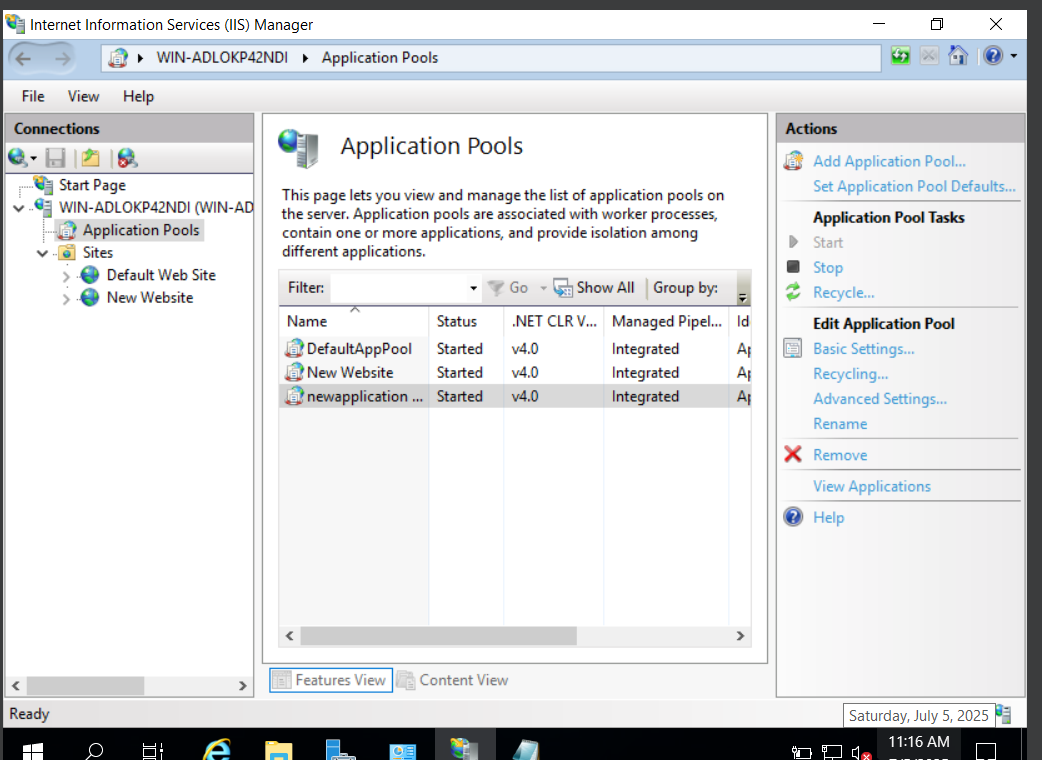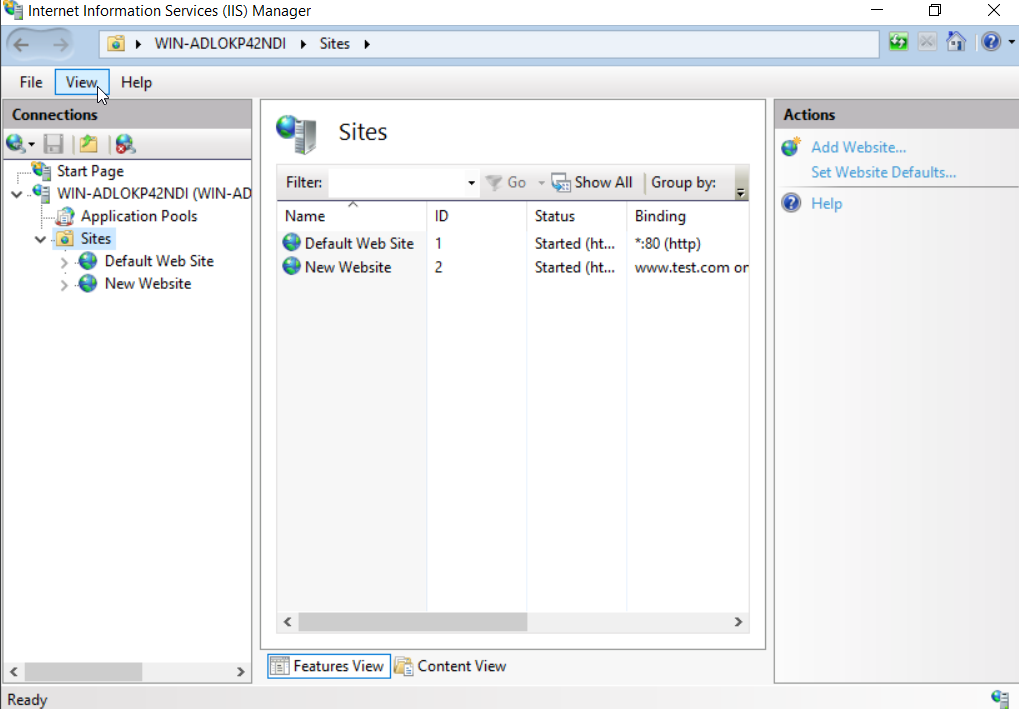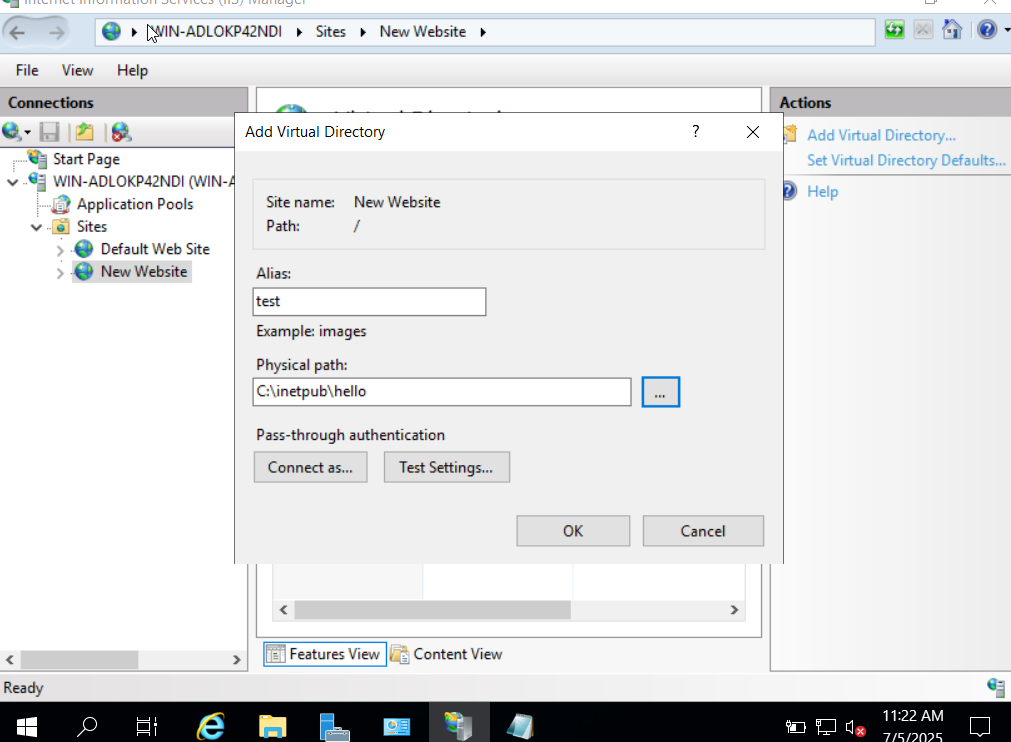Understanding IIS Architecture: Application Pools, Sites, and Virtual Directories
If you're new to managing web applications on Internet Information Services (IIS), it’s important to understand the core building blocks that make the platform powerful and flexible. Whether you're hosting a simple website or a complex enterprise app, three key concepts form the foundation of IIS architecture:
- Application Pools
- Sites
- Virtual Directories
In this article, we'll explain what each of these components does, how they work together, and why they matter.
What Is an Application Pool?
An Application Pool in IIS is an isolated container for running one or more web applications. Each pool has its own worker process (w3wp.exe), which means web apps can run independently without interfering with one another.
Why Application Pools Matter:
- Isolation: Keeps apps from affecting each other if one crashes or becomes unstable
- Security: Apps can run under different user identities
- Performance: Pools can be restarted, recycled, or tuned individually
Common Use Cases:
- Run legacy and modern apps on the same server using different .NET versions
- Separate staging and production environments
- Improve security by isolating apps from each other
You can configure an application pool’s settings such as:
- .NET CLR version
- Managed pipeline mode (Classic or Integrated)
- Identity under which the app runs
What Is a Site in IIS?
A Site is essentially a web application in IIS. It includes a root directory, bindings (how the site is accessed), and is always associated with an application pool.
Key Elements of a Site:
- Name: Used to identify the site in IIS Manager
- Physical Path: The folder on disk that contains the site's files (e.g., HTML, CSS, ASPX, etc.)
- Bindings: Define how the site is accessed, including:
You can run multiple sites on the same IIS server using unique bindings. For example:
Site A→http://intranet.local:80Site B→http://portal.company.com:8080
Each site can have:
- Its own SSL certificate
- Logging and security settings
- Independent deployment and update cycles
What Is a Virtual Directory?
A Virtual Directory is a shortcut or pointer to a folder on the server that exists outside the website’s root directory. It allows you to organize your content more flexibly.
Key Benefits:
For example:
- Your website root:
C:\inetpub\wwwroot\MySite - Your virtual directory:
/media→D:\Shared\MediaFiles - URL:
http://yoursite.com/media/accesses files stored on a different drive
How They Work Together
These components work in harmony to deliver a scalable, modular web hosting environment:
- IIS hosts one or more Sites
- Each Site is assigned to one Application Pool
- Each Site may contain Applications and Virtual Directories
- Each application runs isolated within its pool, and can access local or shared content via virtual directories
This modular design ensures:
- Stability (app crashes don’t take down the server)
- Security (controlled access and identities)
- Flexibility (easily host multiple apps and domains)



